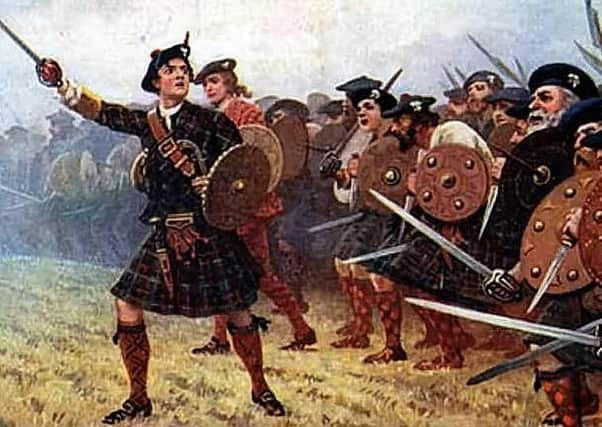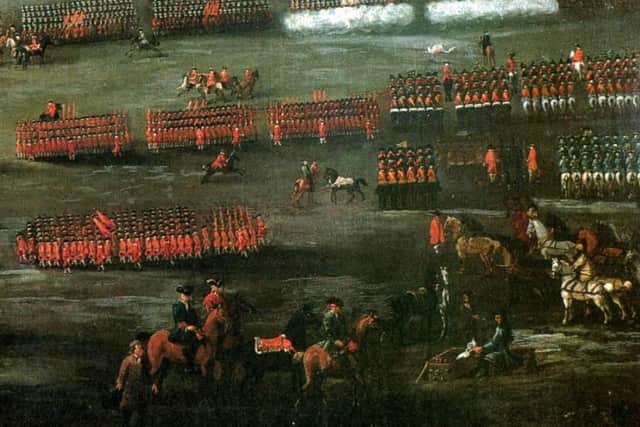Looking back with Ian Scott on perhaps the most important year in Falkirk's history - Sheriffmuir, 1715


There are quite a few candidates like 1600 when King James VI raised the town to the status of a burgh; 1859 when Parliament passed an act which gave real power to bring about improvements to the health and well being of the people and 1957 when everyone knows what happened at Hampden Park.
Important as these undoubtedly are, I have another one to offer. On November 13, 1715 at Sheriffmuir north of Stirling the Jacobite army commanded by the Earl of Mar failed to defeat the Duke of Argyll’s Government redcoats in what turned out to be an indecisive encounter. As the ballad singers put it: “Some say that we won and some say that they won and some say that nane won at a’ man”. The Earl had raised the standard of the deposed King James VII and led an army of 10,000 Highlanders towards Stirling. But despite having a three-to-one advantage Mar was unable to claim victory and the rising was doomed. After all if you have any hope of winning a campaign you need to start with a resounding victory and a no-score draw was not good enough. The Earl hightailed it to France and didn’t come back.
Advertisement
Hide AdAdvertisement
Hide AdSo why was it important for Falkirk? Well, in command of a detachment of dragoons – the horse mounted soldiers – was James Livingston, the 4th and last Earl of Callendar. Riding with him were men from Falkirk though how many we can’t be sure. What we do know is that both Earl James and his men came flying from the battlefield towards Falkirk closely followed by the redcoats. He had just enough time to grab an overnight bag, kiss Lady Livingston farewell and head off into exile. One story tells us that the gallant ‘bairns’ held the enemy at bay near the steeple allowing the Earl time to make his escape.


By the time he was safely in France he had been stripped of his titles and estates and the Earldoms of Callendar and Linlithgow were extinguished. For Falkirk it was bad news as the burgh’s status was downgraded and the gloating merchants of Stirling who had long despised the town sent riders to push over our Mercat Cross. The place where it stood is marked in the cobbles near the steeple. One writer in 1723 said that: “the Earl joined the Highland Army and by Act of Parliament the Regality was sunk by which this place has suffered extremely”. The Earl’s daughter was allowed to rent Callendar House but the family’s power was diminished and things were made even worse when she supported the second failed rising in 1745.
This sequence of events led to the arrival in Falkirk in 1783 of William Forbes which changed everything. He was a ruthless and determined ‘improver’ who did not care who he upset as he went about restructuring the huge land holdings which were now under his control. In the end it probably worked for the economic good of the area but there were many who cursed ‘Copperbottom’ as he was known and longed for the return of the old family.
It could have all been so different if Earl James had said back in 1715, “I think I’ll sit this one out and see what happens”. He didn’t and Falkirk was never the same again.